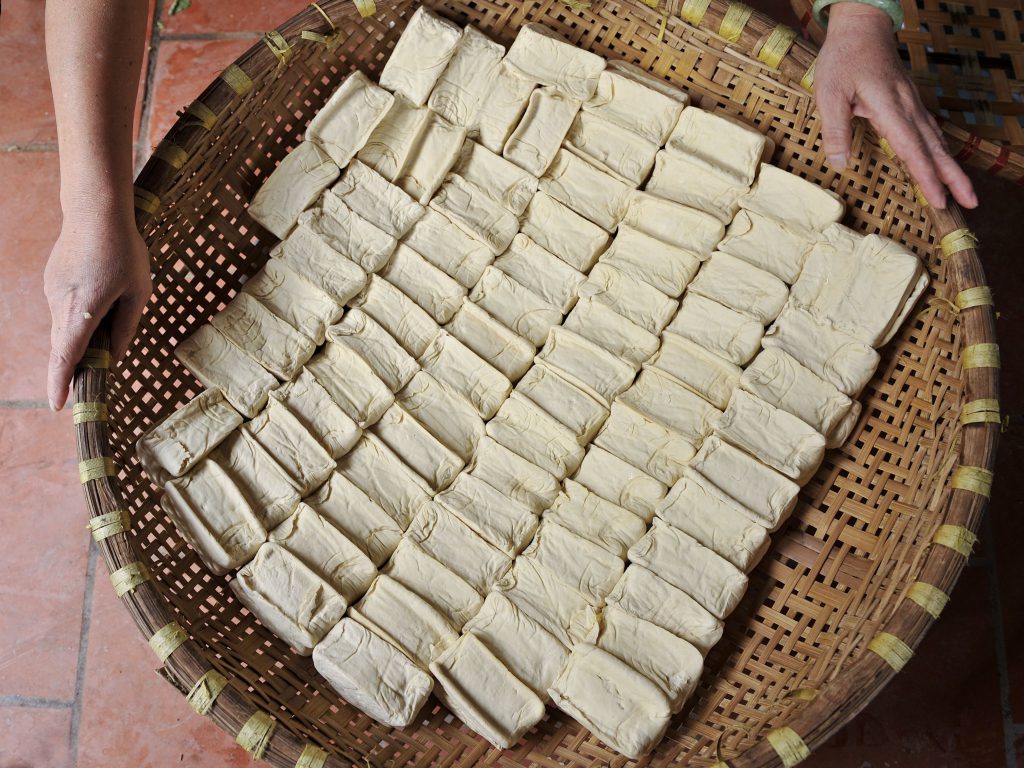
Apricot Tofu Village
Mo - Mai Dong village has been producing tofu for a very long time, although few people can recall how it first got started. The general Tam Trinh of the hai Ba Trung era, according to the elders of the area, was the one who created it and transmitted it to the villagers.
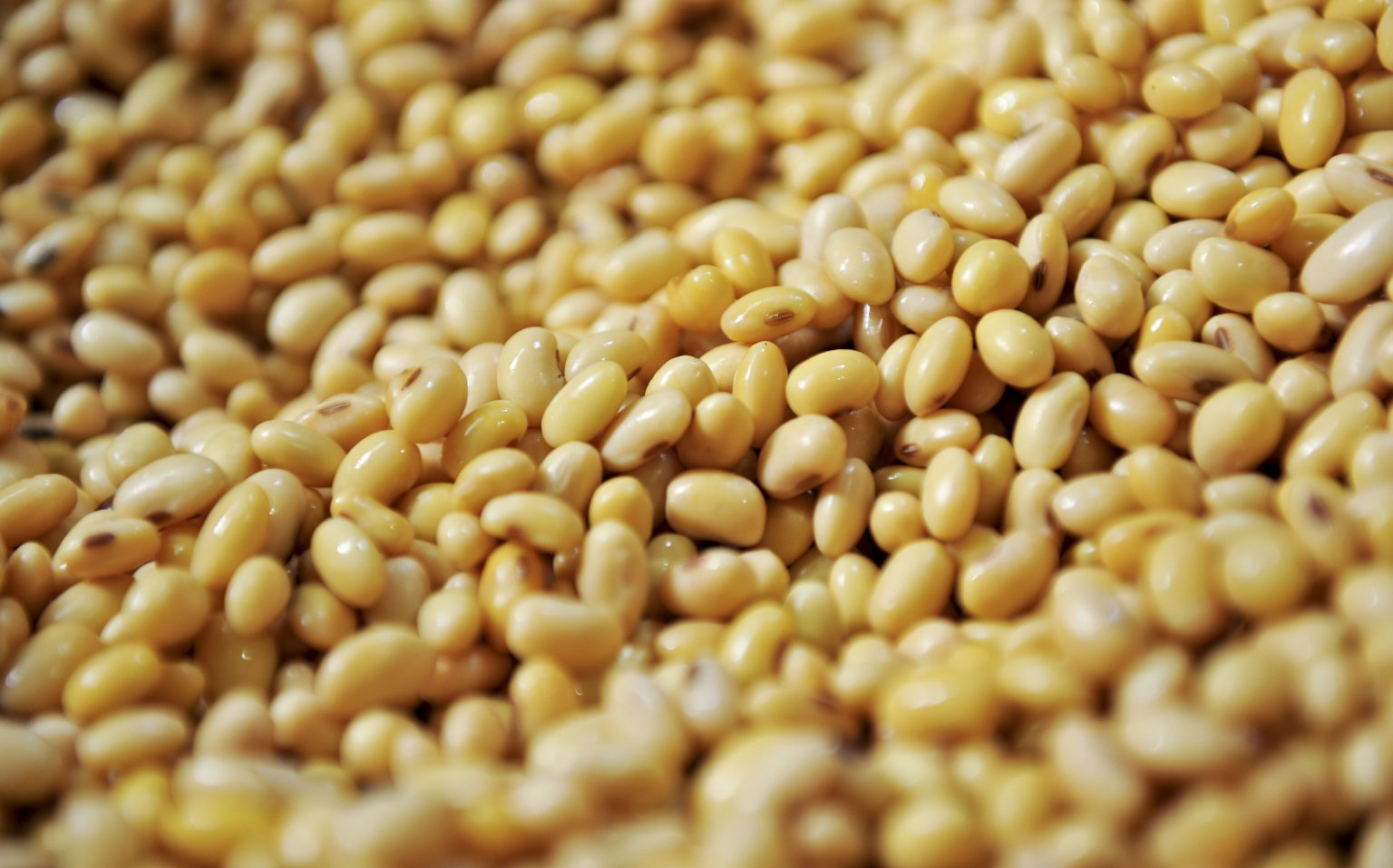 In the past, apricot beans were offered for sale at all of Hanoi's entrances. The Mai Dong people produce baked beans in addition to white beans on charcoal, and they sell them to people who go to concerts, and plays, or for those who pull handcarts at night to do the dishes. When apricot beans are mentioned, people immediately picture lovely little bean coverings with a light yellow hue and a sweet scent. Tofu is made using the same steps and techniques as in many other places, but possibly the reason Plum Village's beans are so good is that the method for creating them is handed down down the generations. Additionally, it was mentioned that apricot beans are known for being wonderful since they are cooked in well water from the apricot village, which has a unique flavor. Every time beans are mentioned, there is a story that old Hanoians only eat apricot-colored beans as a part of every family dinner.
In the past, apricot beans were offered for sale at all of Hanoi's entrances. The Mai Dong people produce baked beans in addition to white beans on charcoal, and they sell them to people who go to concerts, and plays, or for those who pull handcarts at night to do the dishes. When apricot beans are mentioned, people immediately picture lovely little bean coverings with a light yellow hue and a sweet scent. Tofu is made using the same steps and techniques as in many other places, but possibly the reason Plum Village's beans are so good is that the method for creating them is handed down down the generations. Additionally, it was mentioned that apricot beans are known for being wonderful since they are cooked in well water from the apricot village, which has a unique flavor. Every time beans are mentioned, there is a story that old Hanoians only eat apricot-colored beans as a part of every family dinner.
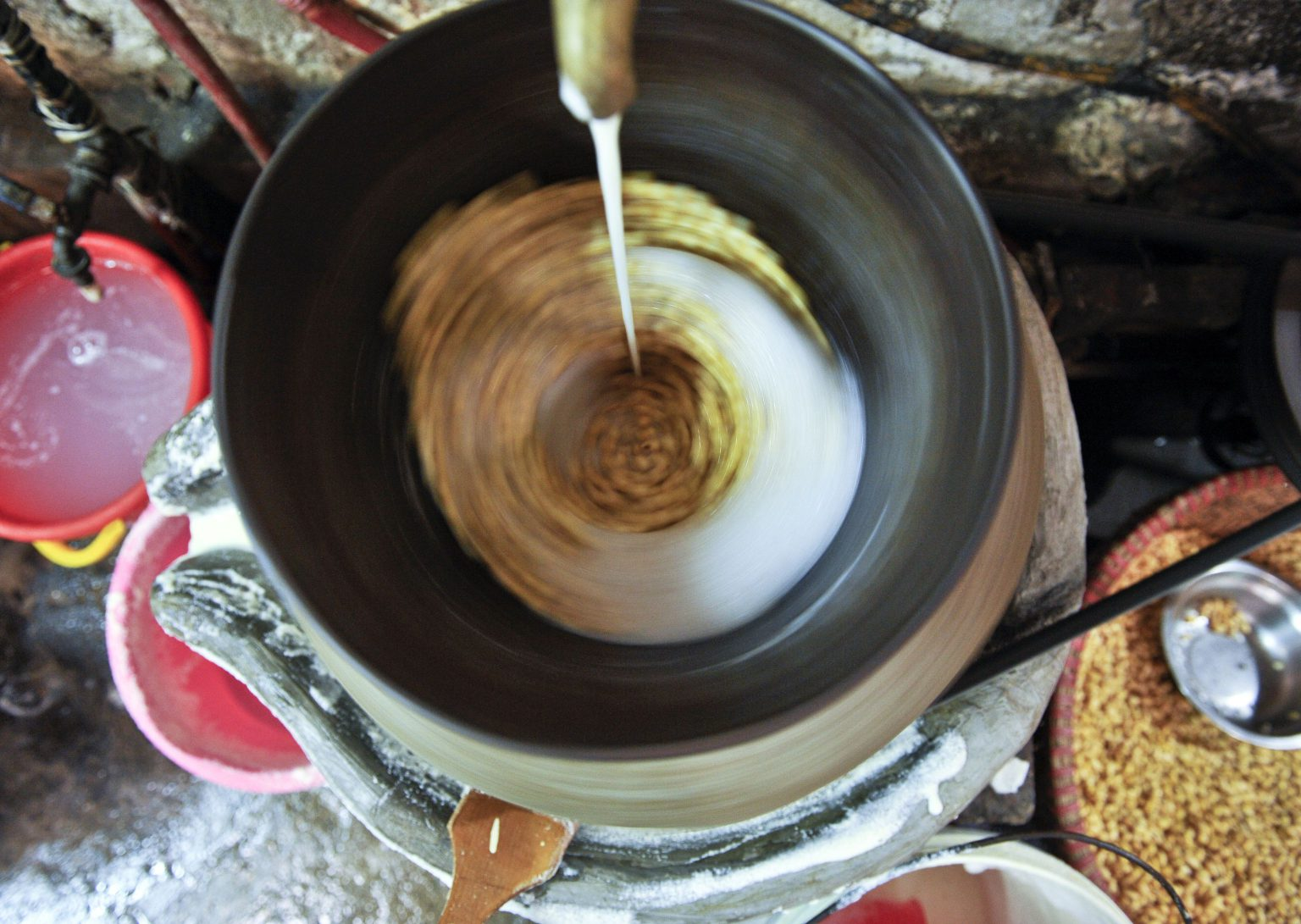 Only about a dozen locals in the area still practice the traditional trade, and there aren't many families still involved in it. The remainder is newcomers who not only learned how to make this tofu but also migrated here from somewhere else.
Only about a dozen locals in the area still practice the traditional trade, and there aren't many families still involved in it. The remainder is newcomers who not only learned how to make this tofu but also migrated here from somewhere else.
People in the area frequently get up very early to make beans in preparation for the morning market in order to produce delectable bean covers. Every family in the community enjoys making apricot beans, which is a tradition that has been passed down from generation to generation. The skins of yesterday's pickled yellow soybeans are peeled off. For bean juice, the final beans are pounded in a stone mortar. Since water is routinely added to the grinding process of soybeans, a significant volume of bean juice is typically collected after grinding. For squeezing and filtering, bean juice is placed in a bag made of coarse fabric. Bean juice is used throughout the cooking process, which is a crucial step in determining whether the beans are of good quality or not. After coagulation, bean brains are inserted in wooden molds after being covered with a thin cotton towel. This kind of mold is utilized for both bean pressing and bean wrapping. Squeezing the beans takes roughly 30 minutes. In order to cool, finished pressed beans are unloaded. The freshly peeled-off finished bean covers were piled on a strainer while they were still hot. If it is to be sold right away, individuals will bring it right to the market, where they will store the beans in cool water until the afternoon of the sale. The residents of Mo village once stored their beans in barrels similar to those used to store water in order to sell them at the market.
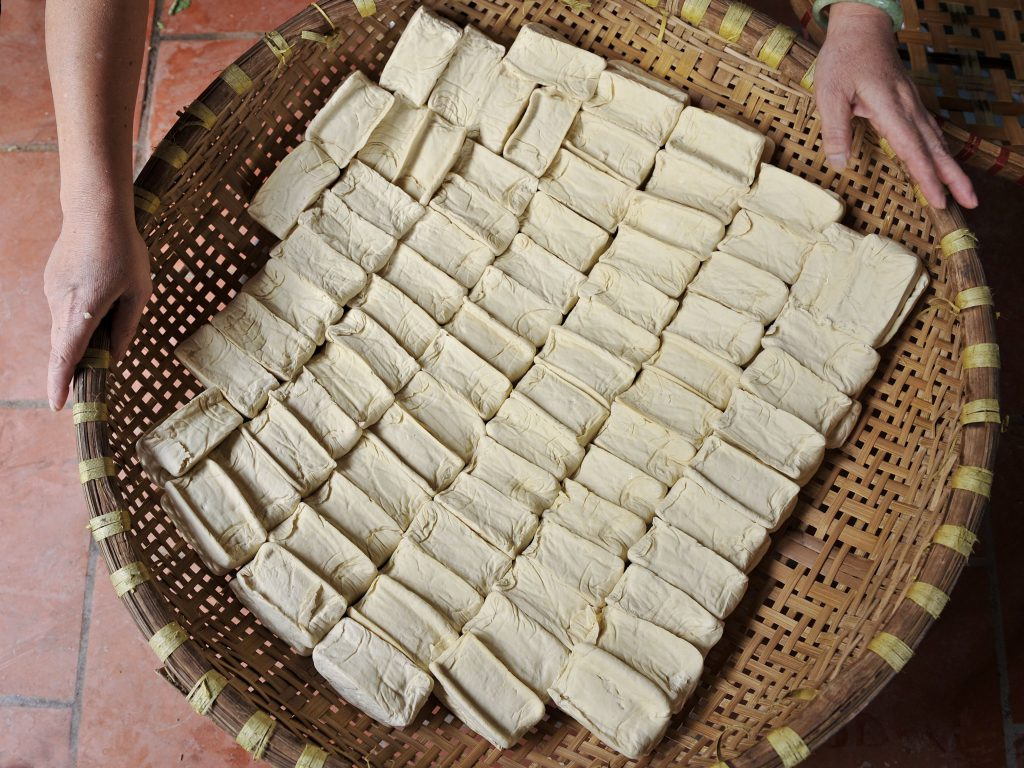 It remains one of the most well-liked dishes. Hot tofu, which doesn't need to be processed, is frequently dipped in chili fish sauce or shrimp paste. However, fried beans are still the most popular food item. People fry the beans in used cooking fat to produce portions with a golden, filthy, and flooded crust. You can eat fried beans with rice or vermicelli.
It remains one of the most well-liked dishes. Hot tofu, which doesn't need to be processed, is frequently dipped in chili fish sauce or shrimp paste. However, fried beans are still the most popular food item. People fry the beans in used cooking fat to produce portions with a golden, filthy, and flooded crust. You can eat fried beans with rice or vermicelli.
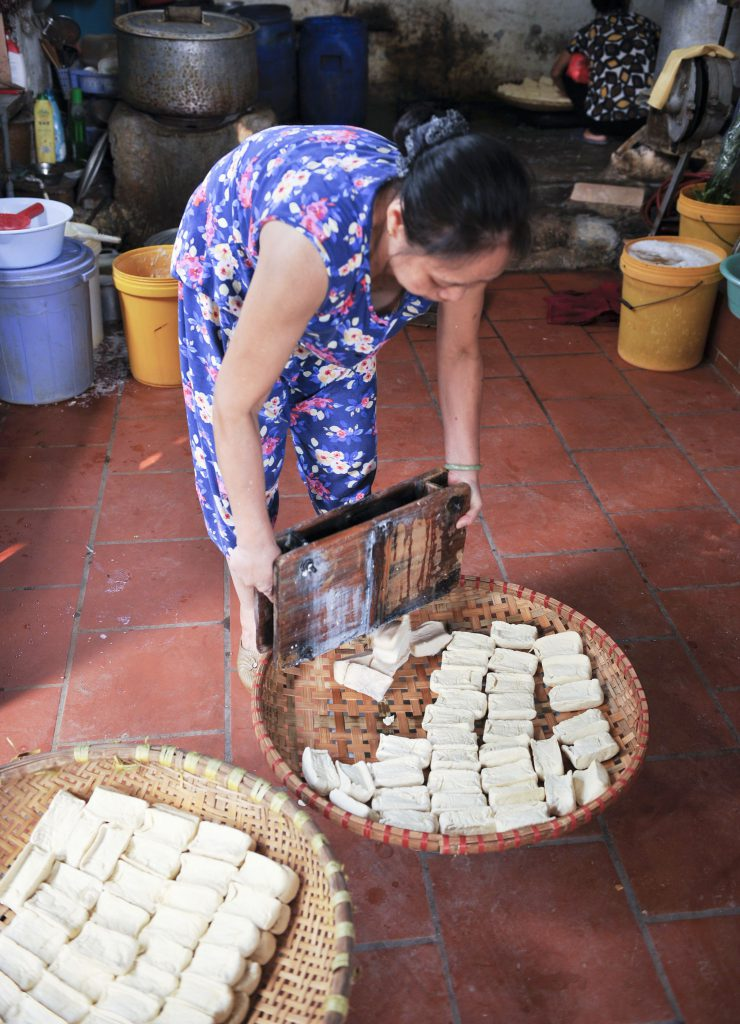 "Dotted with shrimp paste, apricot beans
"Dotted with shrimp paste, apricot beans
On the following day, I finished my breakfast meal.
How come I got you?
Since I adore Mai Dong and yearn for apricot beans."
Restaurants also create a variety of innovative recipes using apricot beans to appease upscale diners, such as banana bean noodle soup, mushroom braised tofu, chili stir-fried tofu, shrimp tofu soup, and banana tofu.
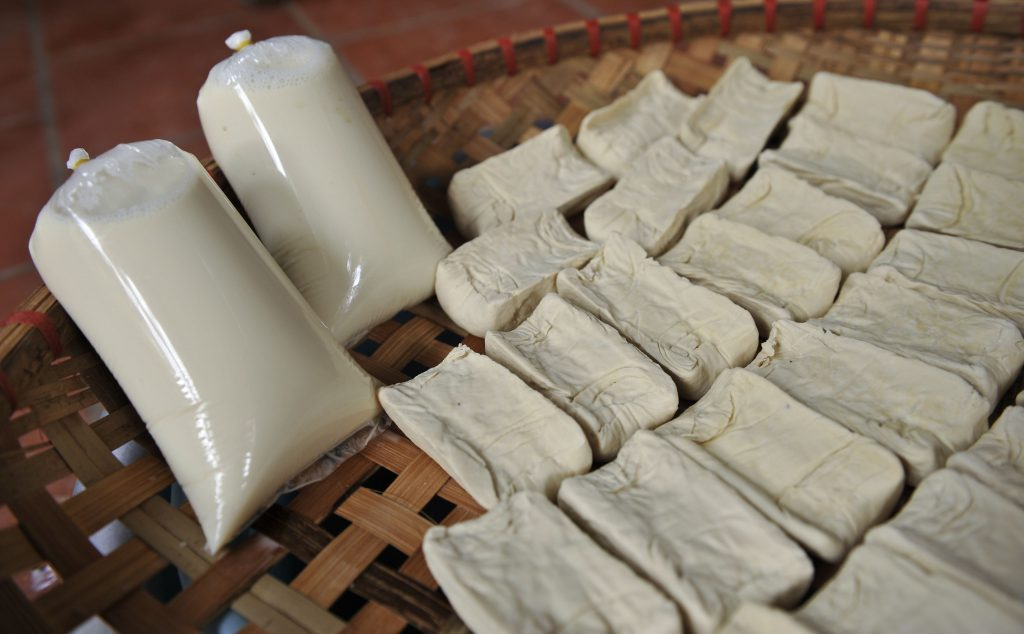 The rusticity of each bean cake has kept diners interested in apricot beans for a very long time. Every time the apricot bean "goes down the street," it attracts a lot of attention and becomes a constant source of nostalgia for Hanoian kids who have grown up distant from the rural. The dish's unique quality is the traditional and cultural flavor specific to Hanoi, the center of a millennia-old civilization.
The rusticity of each bean cake has kept diners interested in apricot beans for a very long time. Every time the apricot bean "goes down the street," it attracts a lot of attention and becomes a constant source of nostalgia for Hanoian kids who have grown up distant from the rural. The dish's unique quality is the traditional and cultural flavor specific to Hanoi, the center of a millennia-old civilization.